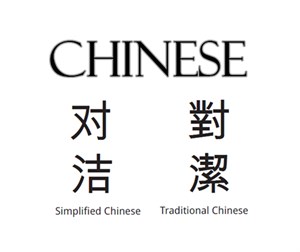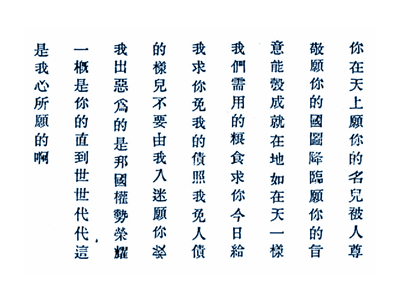Chinese Translation Services: Simplified versus Traditional Chinese?

Chinese Writing Systems vs Spoken Chinese Dialects
When it comes to “forms”, we think in terms of writing systems, and the Chinese language has two primary writing systems, Simplified and Traditional. When it comes to spoken “dialects”, there are many. They are basically classified into one of the seven groups including Putonghua (Mandarin), Min, Gan, Kejia (Hakka), Wu, Yue (Cantonese) and Xiang with each group having a number of dialects.
There are over 1 billion people speaking Mandarin Chinese as their native language. If we include other Chinese dialects, the number goes up to 1.3 billion, which makes Chinese the most spoken language in the world. Even though there are many different dialects in the Chinese language, the writing system in Chinese has remained pretty consistent and stable, which is a great advantage for translation into Chinese.
History of Chinese Writing Systems
Even though China is enormous in geographical area with various spoken languages, the writing system has been unified for a very long period of time. The changes in the Chinese writing system is the contribution of the first Emperor of China, Qin Shi Huang (秦始皇). China had been ruled by different tribes and kingdoms from 3000 BC until Qin Shi Huang unified the independent kingdoms in 230 BC. The majority of the Great Wall of China was constructed during his dominion. In order to govern this vast kingdom, Qin Shi Huang adopted many innovative policies to organize this country. One of them was to unify the Chinese writing system. He abolished other writing systems circulated in those independent kingdoms and made Xiao zhuan (Less Seal) as the national writing system, which was the predecessor for the streamlined modern Chinese calligraphy.

This policy built a solid foundation for the Chinese writing system; all the Chinese languages were brought into one standard written language. Thus people who speak Mandarin and Cantonese can read and understand the same Chinese character while pronouncing it differently. This writing system is the Traditional Chinese, which has been used officially for thousands of years in Chinese speaking regions until the 1950s.
In 1930s, in order to boost the literacy in China, the Chinese government started to consider the implementation of Simplified Chinese. The majority of simplified Chinese characters are drawn from the traditional abbreviated traditional characters and cursive written text known as Caoshu (草書). Generally speaking, Simplified Chinese characters have less strokes or symbols/parts from the Traditional characters. But for the characters that cannot be simplified into the Traditional form, Simplified Chinese characters would be adopted as they are. Even though Kuomintang was the leading party during the discussion of Simplified Chinese usage, when the Communist Party took over the Republic of China in 1949, the Kuomintang Government went to Taiwan and continued to use Traditional Chinese while the Communist Party was implementing the Simplified form in Mainland China.
Today, Hong Kong, Macau and Taiwan are still using the Traditional Chinese as these regions were dominated by different governments during the reform in Mainland China.
As Simplified and Traditional Chinese originated from the same system, the main difference between them is that usually Simplified Chinese has fewer strokes than Traditional Chinese. Here are some of the examples:
| English | Simplified Chinese | Traditional Chinese |
|---|---|---|
| Hair | 发 | 髮 |
| To write | 写 | 寫 |
| To learn | 学 | 學 |
| Book | 书 | 書 |
| Tree | 树 | 樹 |
| Country | 国 | 國 |
| Electricity | 电 | 電 |
In addition to the differences in characters, as these two writing systems were developed in different regions, Simplified Chinese and Traditional Chinese are also using different terminologies for newly developed words. For example, the translation for software in Simplified Chinese is 软件 (ruanjian), and in Traditional Chinese is 軟體 (ruanti). Therefore, even though there are programs that can convert between Simplified and Traditional Chinese, it is still not sufficient for adequate localization.
